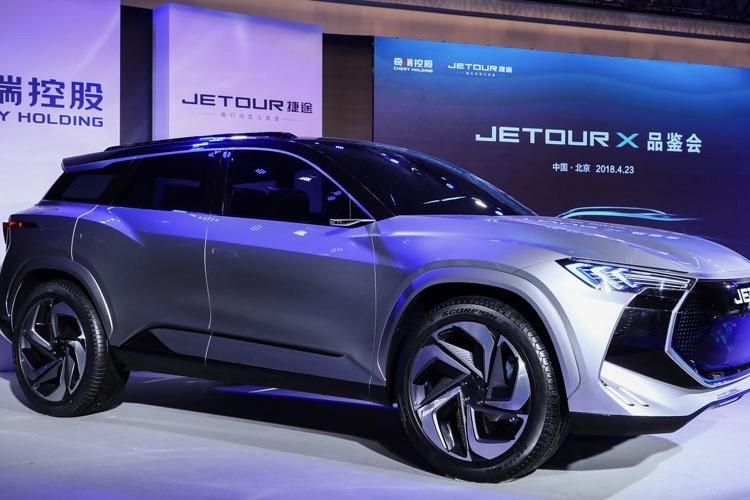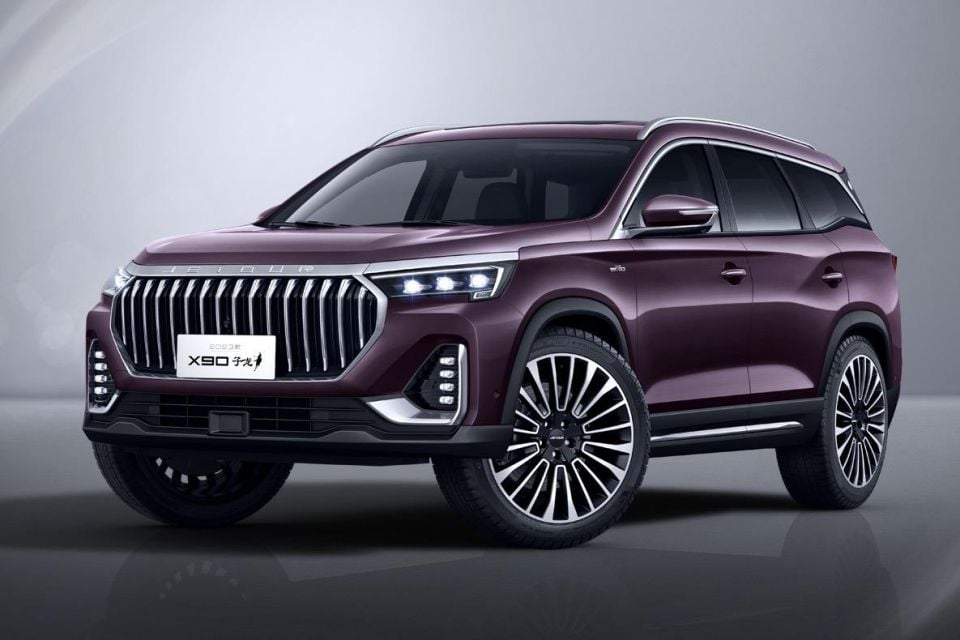

Anthony Crawford
1990 Lamborghini Countach review
6 Days Ago

Senior Contributor
Chinese carmaker Chery recently returned to Australia after a nine-year absence.
While its first go foisted a range of cheap-and-nasty runabouts sold by an independent distributor on the market, its second crack is led by the modern Omoda 5 small SUV supported by a factory-backed operation.
While you can expect Chery to become a better-known badge in Australia, the company makes vehicles under other brand names as well.

This is commonplace in China. For example GWM has the Haval, Ora, Tank and Wey brands, BYD has its Denza and Yangwang spin-offs, and SAIC Motor operates under MG, LDV/Maxus and Roewe branding.
One reason why Chery Holding’s SUV-heavy Jetour Auto brand is worth talking about is that it makes cars which, on the surface, look ideal for average Australian buyers.
While there’s no firm news around a local launch, apart from a local trademark filing late last year, we’re keeping our eyes peeled regardless.

What is it and when did it start?
Jetour (or Jietu) launched in China in January 2018, as a self-proclaimed “new face” backed by the “old aristocrat” Chery Group. Its first model was the X70 seven-seat SUV.
At launch it claimed to have its own design and R&D team comprising more than 700 people, tasked with making family-friendly vehicles with an adventurous spirit.
Its Chery parent company is much bigger, with nearly 50,000 employees and a presence in 80 countries.

It showed the world a concept called the Jetour X in Beijing on April 24, 2018, previewing the design of its planned next-generation offerings.
Who owns it and where’s it based?
Chery Holding owns Jetour, and is based in China’s Anhui Province.
What are its markets?
China is its principal market. According to a February 2023 announcement, Jetour has sold around 660,000 vehicles over its first five years of operation.

But the company has branched out, having entered Central and South America in July of 2019, the Middle East in January 2020, and Africa in December 2020.
It has a presence in Uruguay, Ecuador, Bolivia, Angola, Myanmar, the UAE, Bahrain, Chile, Kuwait, Peru, Colombia, Paraguay, Mexico, Oman, Saudi Arabia, Qatar, Iran, Azerbaijan, Cote d’Ivoire, Ethiopia, Libya, Nigeria, Cambodia, Uzbekistan, Kazakhstan and Moldova.
What are its vehicles?
The Jetour X70 range is about the size of a Mitsubishi Outlander (4.7m long), and likewise has a small third row of seats available. Most use turbocharged petrol engines but there’s also the X70S EV with LFP batteries and a claimed 401km range on the lenient Chinese range test.

Newer products include the larger (4.9m) Jetour X90 series, which offers three seating rows and a more contemporary design. It looks very much to be aimed at vehicles such as the Toyota Kluger.
Newest of the bunch is the Jetour Dashing (a break from the nomenclature template), a 4.6m-long medium SUV using a turbocharged petrol engine and offering some sleek, curvaceous styling.

What comes next?
Chery’s spin-off Jetour brand is preparing a range of rugged-looking vehicles, the first of which will be called the Traveller. It was revealed at the end of February 2023.
The Jetour Traveller has a boxy silhouette reminiscent of the GWM Tank 300, which recently went on sale in Australia. It’ll be about 4.8m-long and offer turbo-petrol and PHEV drivetrains, with mechanical four-wheel drive and diff lock/s.

The Chinese company teased a number of upcoming vehicles in early March. Some of the most notable in the shadowy line-up teaser includes what appears to be the long-wheelbase seven-seat Traveller T1L, a larger off-roader called the T-2/T-3, and even a ute called the P-2/P-3.
As for Australia? Stay tuned, as we know that Chery has big plans.
MORE: Brand profile on China’s Aion, set to arrive in 2024 MORE: Brand overview on Lynk & Co
Where expert car reviews meet expert car buying – CarExpert gives you trusted advice, personalised service and real savings on your next new car.


Anthony Crawford
6 Days Ago


Matt Campbell
5 Days Ago


James Wong
4 Days Ago


Max Davies
2 Days Ago


Josh Nevett
1 Day Ago


Josh Nevett
18 Hours Ago